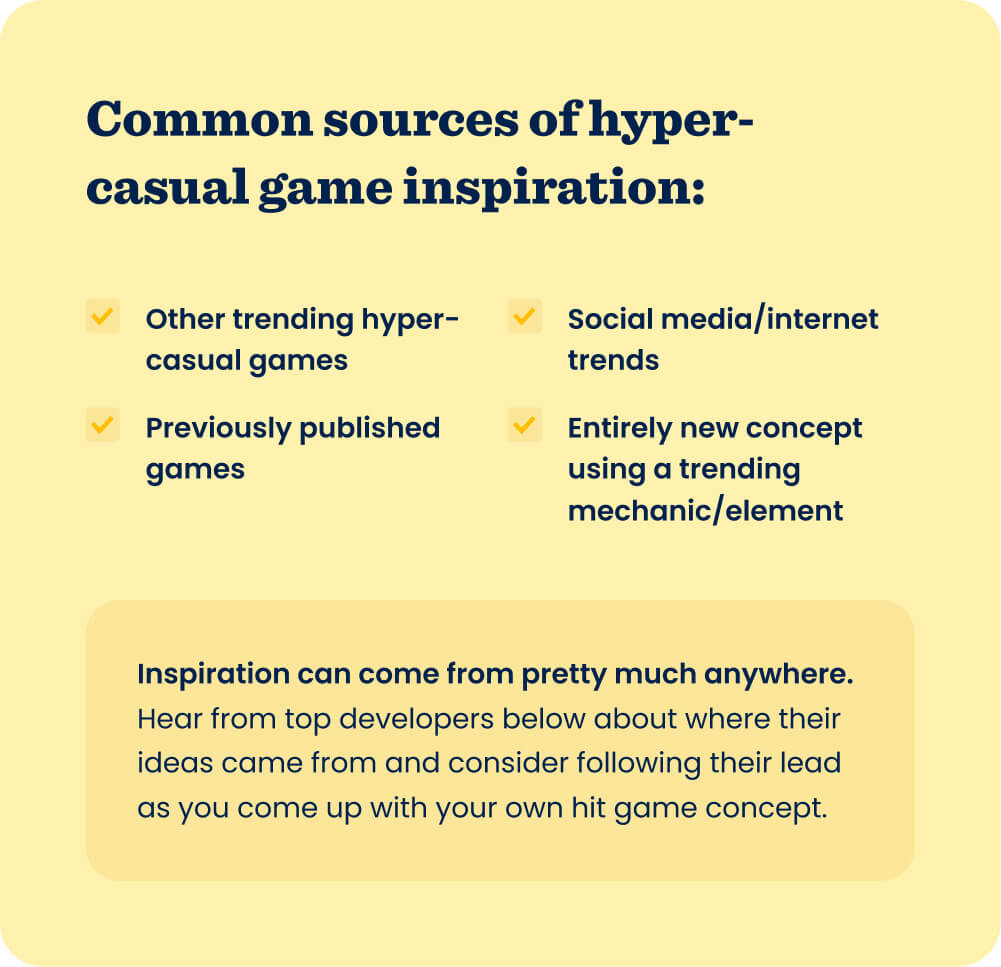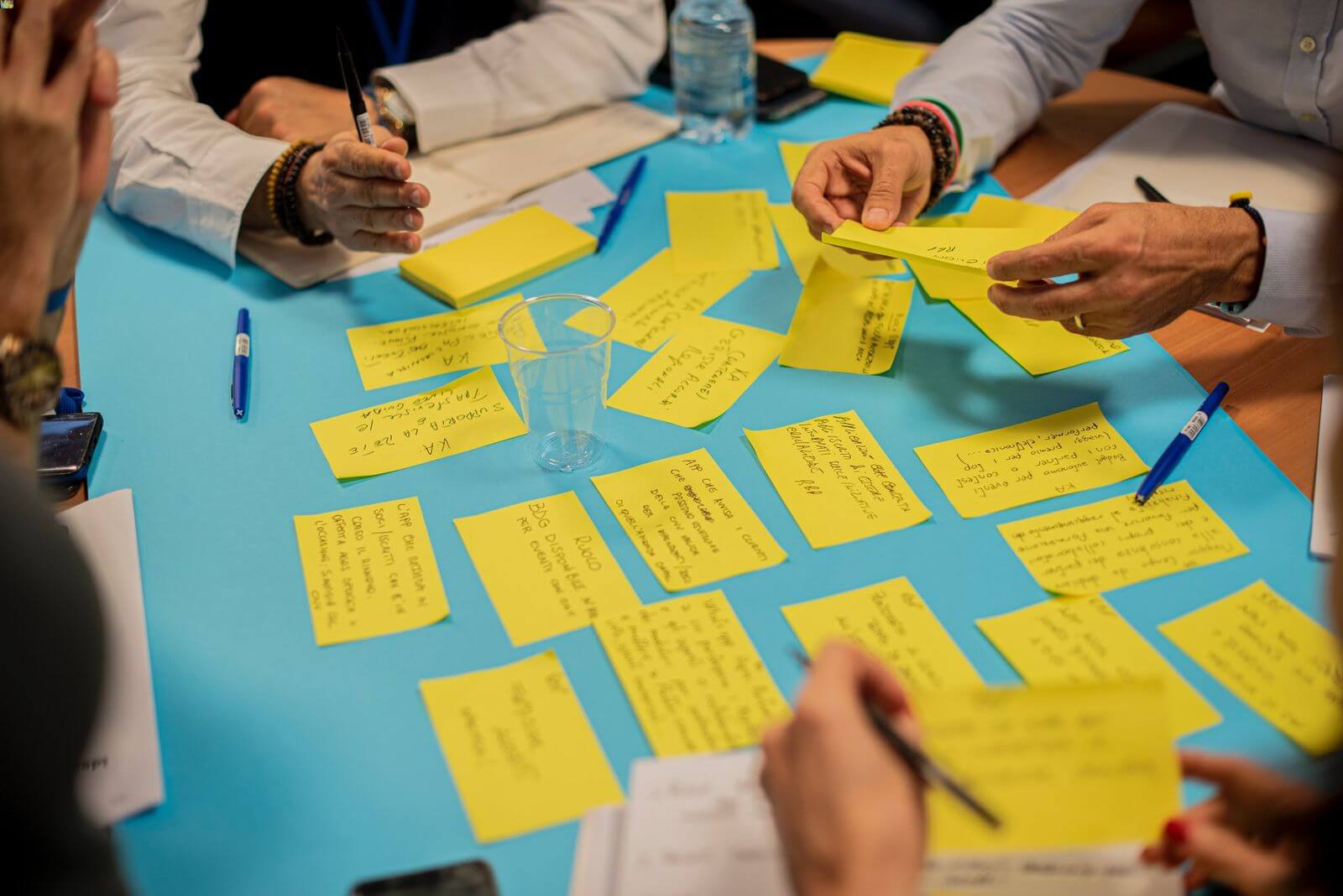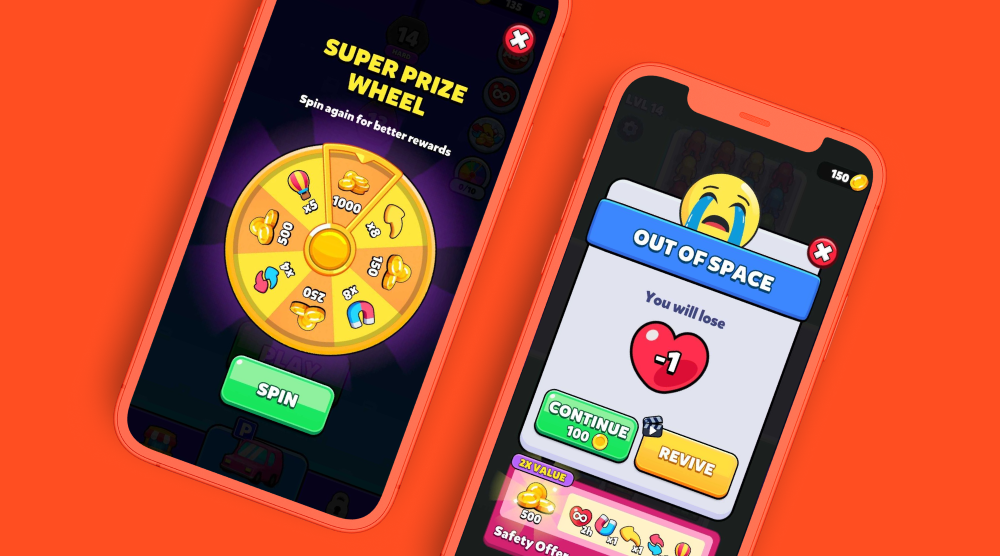Before hit titles like Bridge Race and Join Clash became the most downloaded games in the world, they started off as just concepts. For most developers, coming up with these concepts can be the most challenging part of the development process. So we’ve rounded up the stories of the inspiration behind some of the biggest Supersonic titles to help you during ideation. Below, discover surprising facts, new techniques, and insights from top developers on where they got the ideas for their games.

Grab Master, Ging Games
“We wanted to create a game based on the inverse kinematic (IK) mechanic with animation blending - users need to tap and drag backwards to move the character. Using the inverse kinematic mechanic with custom-made animations enhances the storyline and feels unique, which boosts user engagement. There were other games in the top charts using a similar rag doll mechanic, like Move People, that let users pose a character using IK. But we wanted to create a dynamic experience where the characters are constantly on the move - the environment and storyline change and evolve throughout this movement.” Read the full case study.
Tall Man Run, VectorUp Games
“I often think of new games by searching for an addictive mechanic then building a game around that. For Tall Man Run, I was drawn to the trending mechanic of character transformations that I saw in other runner games at the top of the charts, like increasing the length of a character’s neck or making them fatter/thinner. From here, I combined the transformations I saw into one - the character in my game grows width-wise and in height. From the start as I was building the prototype, I could tell this was an interesting and humorous mechanic. When I tested it with Supersonic, it confirmed what I believed - CPI was $0.40 and in-game metrics were hitting the right benchmarks that proved the game had potential.” Read the full case study.
Pro Builder, Black Candy
“We always look at the top hyper-casual charts for inspiration for our next game concepts. Recently, we saw many games in the idle arcade genre, which tends to have a higher LTV than other hyper-casual games - we decided to take advantage of this trend to create our own idle arcade prototype.” Read the full case study.
Arm Simulator, GameLemo
“The Supersonic team often shares trends and market insights with us, which is how we saw the ragdoll mechanic was trending. In fact, Supersonic’s Move People inspired us to create our own game using this mechanic.” Read the full case study.
Color Match, Garawell Games
“The idea for Color Match goes back to a game we created and self-published in the past called Colour Merge 3D. This game already had a lot of depth as it gave users the ability to mix many different colors. For example, using just shades of red, green, and blue, users can create 1.7 million different colors. Once we saw the color match trend on Reddit and TikTok, we knew we needed to bring this concept back to life.” Read the full case study.
Draw Weapon, SAT–BOX
“The idea behind Draw Weapon came from seeing other hyper-casual games in the top charts with drawing mechanics. In many of these games, users would draw simple lines - we progressed this idea by keeping the drawing mechanic and having users draw real objects they could then use in the game.” Read the full case study.
Giant Wanted, Megawatch
“The concept behind Giant Wanted came to us during a team brainstorming session. Initially, we discussed a new shooter game involving blasting through walls at close range. Then, one of our programmers came up with the idea to include a giant that users would need to target by blasting through walls and buildings - the entire team was excited by the concept.” Read the full case study.
Escalators, Black Candy
“The idea for the game came from a GIF I came across online that showed a crowd of people on an escalator. The GIF was very satisfying to watch and inspired us to create a hyper-casual game that would give a similar satisfying feeling to users.” Read the full case study.
Rope Man Run, Casual Hit Studio
“Rope Man Run came to mind when I saw other games in the charts featuring characters that assemble and disassemble - it’s like a gain/lose mechanic that affects the character directly. As I was going to bed one night, I had the idea to apply this trend to a game featuring a character made of rope.” Read the full case study.
Bridge Race, Garawell Game
“In its earliest iteration, Bridge Race used a collecting and filling mechanic combined with a last man standing concept. We designed a mini-golf environment with no characters, and users collected and placed golf balls into holes to create bridges.” Read the full case study.
Move People (Make ‘Em), Pau Rau Studio
“While tracking the games in the top hyper-casual charts, I saw there was a trend for maneuvering characters’ limbs into certain positions. I had the idea to apply this trend to a face morph game and expanding on this, I thought that players could maneuver the full body instead of just the face - this created more options for gameplay.” Read the full case study.
Draw the Line, Friends Game Incubator
“The concept for Draw the Line came from an old Flash game we created in the past. We saw how addicting the gameplay of the desktop game was and decided to turn it into a mobile game.” Read the full case study.
911 Emergency Dispatcher, Five Bits
“The initial idea behind 911 Emergency Dispatcher came from watching the trending hyper-casual games in the top charts and seeing the rise of the decision-making sub-genre. As we were brainstorming with Supersonic, the concept of an emergency dispatcher came up.” Read the full case study.
Stacky Dash, Born2Play
“The inspiration for Stacky Dash goes back to one of the best-performing games I designed called Gobble Dash. That same idea of collecting and growing helped inspire our concept for Stacky Dash. This ‘growing’ mechanic is inherently satisfying, so we combined it with the appeal of a hyper-casual puzzle game and the popular stacking mechanic.” Read the full case study.
Emoji Puzzle, Fun Velikan
“We were thoughtful in designing something that no one else was doing. With this in mind, we designed Emoji Puzzle after seeing many puzzle games on the top of the charts, and recognizing that an association game with simple game mechanics would appeal to a broad range of users.” Read the full case study.
Elemental Master, FeoFun
“Looking at the top hyper-casual games, our team at FeoFun saw that first-person games were trending. That, plus being inspired by other popular games that used supernatural forces and elements, led us to design a prototype of a first-person perspective game involving superpowers.” Read the full case study.
Going Balls, Pronetis Games
“The idea for Going Balls came from one of our previous mid-core games, Gyrosphere Trials. The core mechanics from this game inspired the ones we used for Going Balls, but we adapted the implementation, psychology, and gameplay for a hyper-casual audience.” Read the full case study.
As you can see, inspiration can come from pretty much anywhere - whether that’s a previous concept you’ve worked on, what’s trending in the top charts, or even a GIF on the internet. For even more tips and tricks to help you come up with a great hyper-casual game concept, check out this blog post. We can’t wait to see what you come up with!
Let's put these tips to good use
Publish your game with Supersonic


